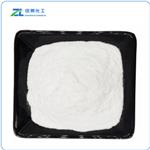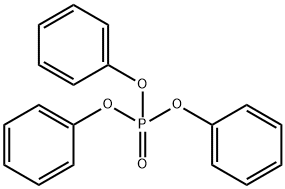Triphenyl Phosphate: Applications and its Reproductive Toxicity
On October 16, 2024, the European Chemicals Agency (ECHA) announced that the European Union Member States Committee (MSC) agreed at the October meeting to identify triphenyl phosphate (TPP) as a SVHC candidate substance because it has endocrine disrupting properties in the environment.
ECHA will issue an announcement in early November to officially include the substance in the list of SVHC candidate substances. By then, the list of SVHC candidate substances will increase from 241 to 242.

Figure 1. Triphenyl phosphate
Properties
Triphenyl phosphate is referred to as TPP, chemical formula PO(OC6H5)3, molecular weight 326.28, colorless or white needle-shaped crystals, or crystalline powder, odorless, or slightly aromatic, tasteless, relative density 1.185 (25℃), melting point 48.4~49℃, boiling point 370℃, flash point 223℃, refractive index 1.550, insoluble in water, soluble in benzene, chloroform, ether, acetone, and easily soluble in ethanol. This product has low volatility, good flame retardancy, poor plasticizing ability, poor light resistance and pollution resistance.
Uses of Triphenyl Phosphate
Triphenyl phosphate is mainly used as a flame retardant plasticizer for engineering plastics and phenolic resin laminates. It is also used as a softener for synthetic rubber and a raw material for the manufacture of trimethyl phosphate.
Reasons for triphenyl phosphate being included in the SVHC list Triphenyl phosphate has endocrine disrupting properties in the environment and poses a potential threat to human health and the ecological environment. Therefore, the EU member state committee decided to include it in the SVHC list to strengthen the management and monitoring of triphenyl phosphate.
Hazards to human health
Nervous system effects: Triphenyl phosphate has a mild inhibitory effect on human erythrocyte acetylcholinesterase, which may interfere with the normal function of the nervous system and affect the transmission of nerve signals, but its long-term effects on the human nervous system need further study.
Risk of sensitization: There have been reports of TPP sensitization cases, which may cause allergic reactions after contact, such as skin redness, itching, rash, etc. Severe symptoms may cause breathing difficulties.
Reproductive development hazards: Animal experiments show that this substance can cause developmental heart defects, etc. In terms of medical applications, the EU says that its materials may be reproductively toxic and may have adverse effects on fetal development.
Other health issues: Triphenyl phosphate can enter the human body through the skin or nasal cavity, and long-term exposure may cause chronic toxicity to the human body. Current studies have found that it may be related to health problems such as obesity.
You may like
Related articles And Qustion
Lastest Price from Triphenyl phosphate manufacturers

US $10.00/kg2025-04-21
- CAS:
- 115-86-6
- Min. Order:
- 1kg
- Purity:
- 99%
- Supply Ability:
- 100 mt

US $10.00/kg2025-04-21
- CAS:
- 115-86-6
- Min. Order:
- 1kg
- Purity:
- 99%
- Supply Ability:
- 20 ton



